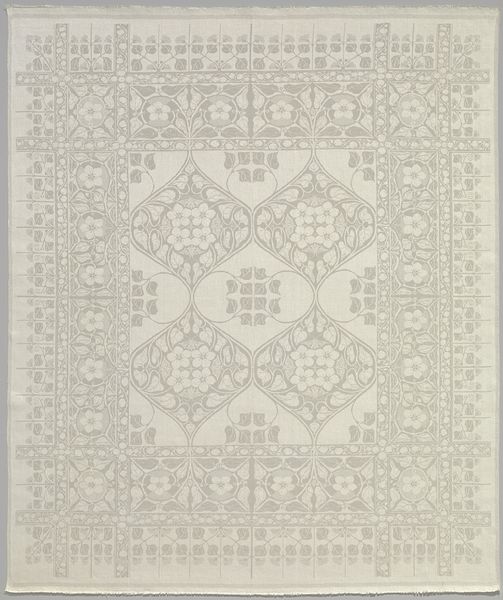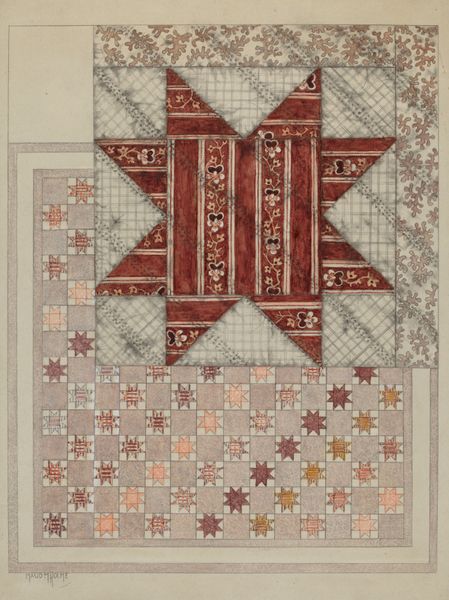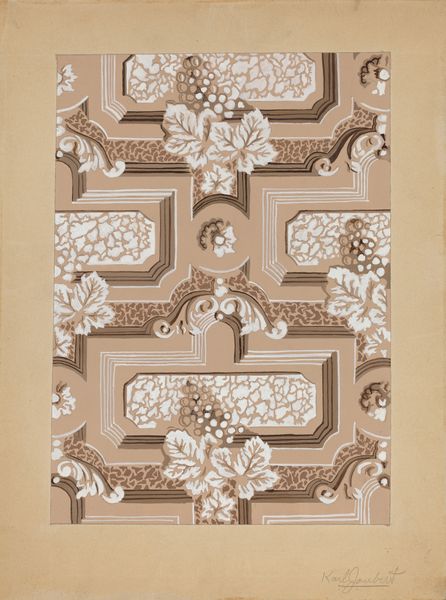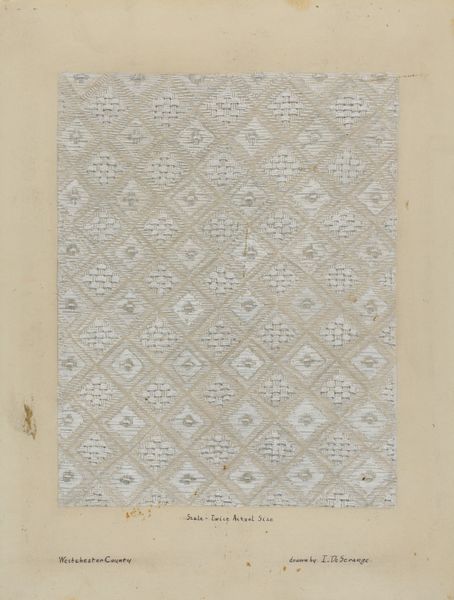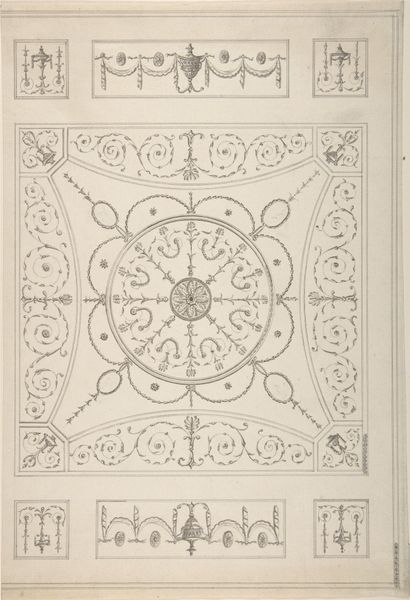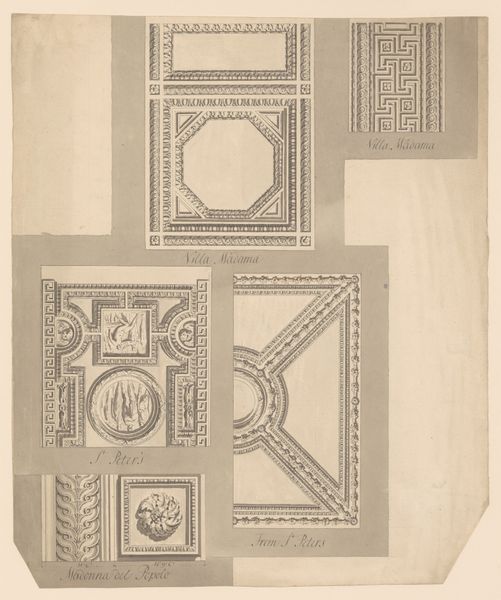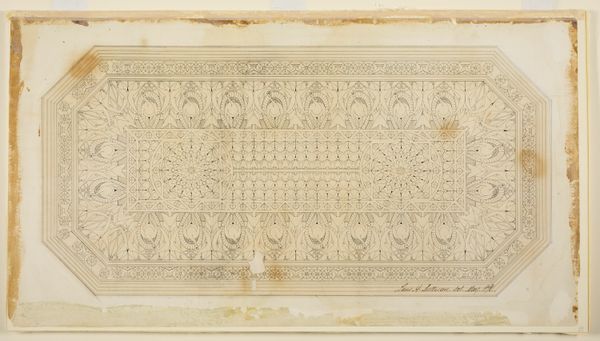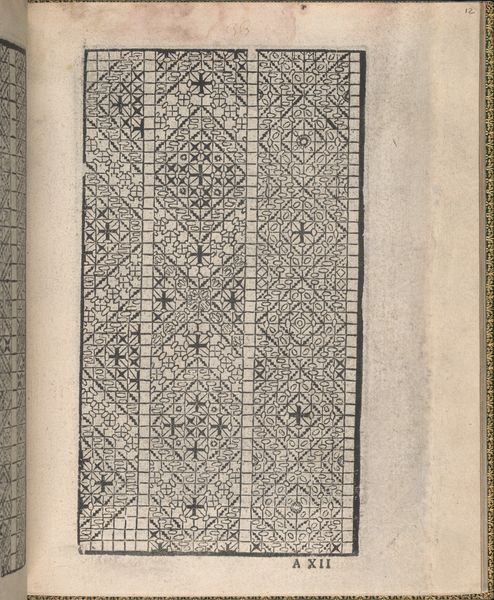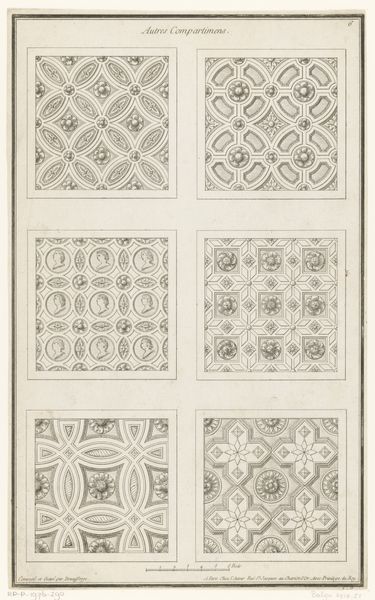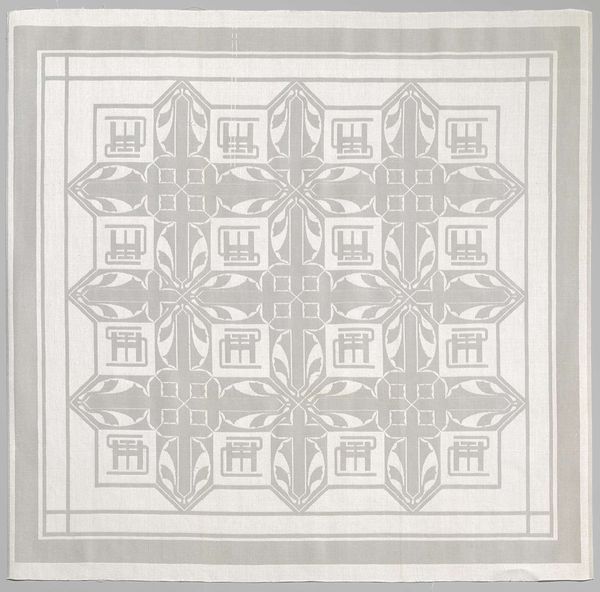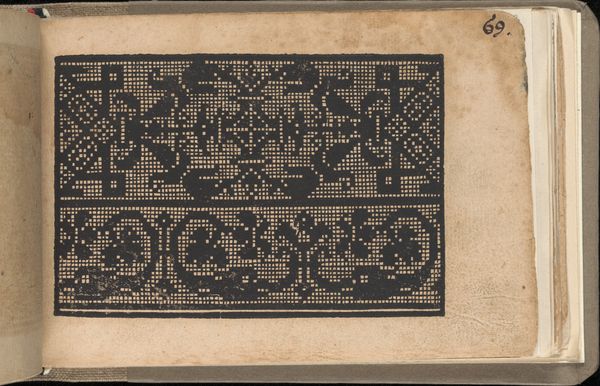
textile
#
natural stone pattern
#
textile
#
geometric pattern
#
repetitive shape and pattern
#
geometric
#
fabric design
#
repetition of pattern
#
vertical pattern
#
pattern repetition
#
textile design
#
imprinted textile
#
layered pattern
Dimensions: overall: 45.7 x 35.6 cm (18 x 14 in.)
Copyright: National Gallery of Art: CC0 1.0
Curator: Dorothy Dwin's textile work, "Runner," created in 1939, is a captivating exploration of geometric abstraction. Editor: It’s calming, isn’t it? Like staring into a complex, hand-knitted dream. I find a subtle, meditative quality in it. Almost hypnotic. Curator: Absolutely. The repetitive shape and pattern evoke a sense of order. The interplay of vertical lines, repetitive shapes, and layered motifs resonates with elements of Pattern and Decoration, but also, hints at the socio-economic context, textile creation often being relegated to a lesser status in fine art spaces, primarily assigned to women. Editor: I love that! Like the pattern is running... escaping its perceived role. What are those little shapes in the main central image... are those supposed to be individual stitches? Curator: The almost microscopic, dot-like stitches build all kinds of figures, forming geometric designs of natural stone, fabricated by a layered network. What makes "Runner" compelling is how Dwin challenges hierarchies within craft and design itself. By calling our attention to imprinted textiles, to fabric design, it compels us to reckon with labor, and consider what design means outside of a conventional, fine-art setting. Editor: Exactly! You put words to my intuition. I love how the imperfections make it perfect. It reminds me of ancient mandalas, where perceived "flaws" ensure the image does not capture the viewer’s gaze, compelling their participation in something larger. The idea that maybe the labor is a collaborative act, a form of subtle community. Curator: The texture itself invites contemplation. Its abstraction offers freedom from rigid representational norms and embraces broader discussions of race, gender, and the very politics of seeing. The use of material offers, I think, space for different modes of expression that intersect at points in unexpected, critical ways. Editor: Yes, it also reminds me to appreciate the imperfect beauty of things made with patience and love, maybe letting go of perfectionism and embracing the flaws of the creative journey... Thank you. Curator: A truly compelling experience and reminder of the unseen narratives woven into the everyday objects surrounding us.
Comments
No comments
Be the first to comment and join the conversation on the ultimate creative platform.
